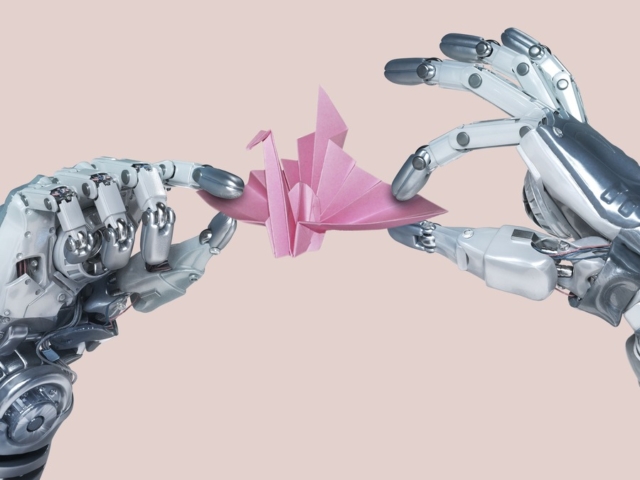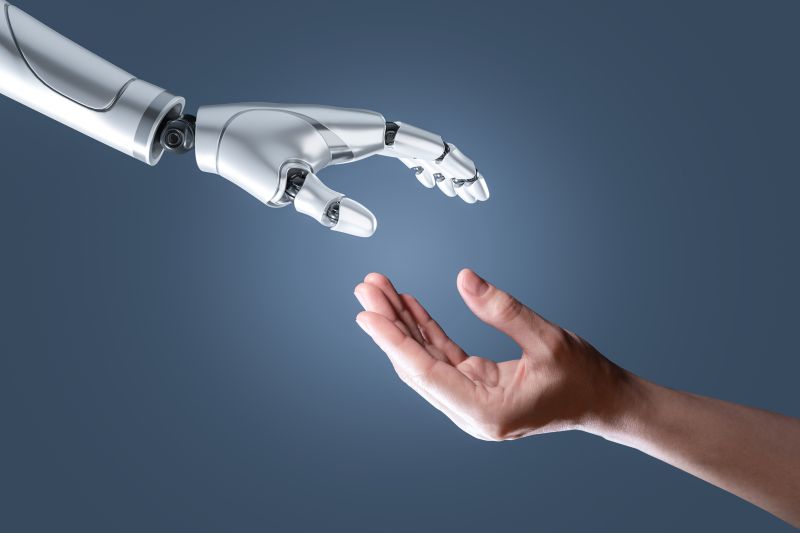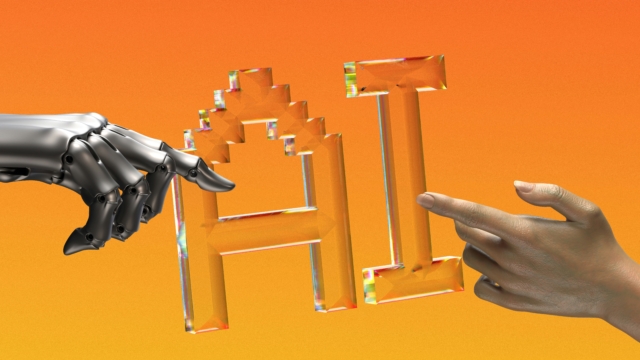Human-AI Collaboration with Strategic Models

Aug 11, 2025
Last updated on Aug 11, 2025
Understanding how can AI and humans work together effectively is not one-size-fits-all. Success depends on picking the right model for the right task—whether a human guides the AI, watches it from afar, or stays in full control. To get real value, leaders need a clear way to decide how, when, and why humans should work with AI systems.

Key takeaways
- Success in human-AI collaboration requires picking the right model based on task needs, risk levels, and who makes decisions—not using the same approach for everything.
- Teamwork works best when humans already beat AI at specific tasks, especially creative work that needs expert knowledge, while adding humans to better AI systems can hurt performance.
- Four key rules drive success: clear roles and who decides what, AI systems that users can understand and trust, smooth communication with feedback, and keeping humans responsible for all results.
Human-AI collaboration is a smart partnership that brings together human creativity, critical thinking, and understanding with AI’s speed, data power, and precision. The goal is getting results that neither could reach alone, transforming the future of work and changing how companies tackle tough challenges and run more efficiently. So far, this synergy has primarily emerged in a few key main ways:
- Data analysis and insight generation: AI processes vast datasets to find patterns, while humans interpret these insights to make strategic decisions.
- automation of routine tasks: AI handles repetitive work, freeing humans to focus on higher-value activities.
- Decision support: AI provides recommendations and data-driven options, empowering humans to make faster, more informed choices.
- Iterative content creation: Humans guide generative AI tools to rapidly draft, edit, and rework text, images, or code.
Three core models for human-AI collaboration
The most important choice in building human-AI in the workplace is picking the right model. Risk tolerance drives this decision—some tasks demand tight human control, while others benefit from AI independence with human backup.
Model 1: Human-in-the-loop (HITL) — for maximum control
In this model, AI cannot finish its work or make final choices without direct human review and approval. The human acts as a required gatekeeper, making sure every AI output gets checked before use.
When to use HITL:
- High-stakes decisions where errors are costly or dangerous
- Regulatory environments requiring human oversight
- Tasks involving sensitive data or ethical considerations
Medical imaging shows this approach well. AI systems study medical scans and flag problem areas, but doctors review every finding before diagnosis. This maintains or improves detection rates while reducing doctor workload. Banks often use HITL systems for loan approvals, where AI processes applications and suggests decisions, but human underwriters review high-value or complex cases. Success in HITL models requires developing future work skills that enable professionals to effectively collaborate with AI systems.
- The human plays as final approver, checking, fixing, or overriding AI output before it takes effect.
- AI works as the expert analyst, processing data, finding patterns, and showing recommendations for human review.
The leader’s question: For this process, is the risk of an unchecked AI error too high?
Model 2: Human-on-the-loop (HOTL) — for scaled independence with a safety net
Here, AI works on its own by default while humans actively watch the system and step in when facing unexpected problems or performance issues. This model enables high-volume processing with smart human oversight.
Financial trading algorithms show this model well. AI makes trades within set limits while human risk managers watch performance and step in only when risk levels get too high. Manufacturing operations increasingly adopt HOTL systems for equipment maintenance, where AI monitors equipment performance and schedules routine maintenance automatically, but alerts human technicians when unusual patterns suggest potential failures needing immediate attention. Implementing this model effectively requires cultivating a modern workforce mindset that embraces both autonomous AI operations and strategic human oversight.
- The human acts as Supervisor, watching system performance and handling exceptions or emergencies.
- AI serves as the Independent Operator, doing tasks on its own according to programming and alerting human supervisors when help is needed.
The leader’s question: Can this process run on its own 95% of the time, with human help needed only for exceptions?
Model 3: Human-in-command (HIC) — for strategic decision support
In this model, humans keep full command and control over missions while AI acts purely as an advisor. The system provides smart analysis, scenarios, and recommendations to improve human strategic decision-making without taking independent action.
Military operations and corporate governance often use HIC models, where AI systems analyze complex variables and simulate potential outcomes, but human commanders make final strategic decisions. Consulting firms increasingly use HIC approaches for client strategy work, where AI conducts rapid market analysis and scenario modeling, but human consultants interpret findings within client context and make strategic recommendations. This model exemplifies AI-reimagined leadership where leaders leverage AI capabilities while maintaining strategic command and decision authority.
- The human works as Commander, using AI-generated insights to inform strategy and make final calls.
- AI takes the role of Strategic Advisor, analyzing complex variables, simulating potential outcomes, and providing menus of data-backed options.
The leader’s question: Is the main goal improving human decision quality rather than automating the decision itself?

When is collaboration most effective?
Collaboration between humans and AI works best when each focuses on what they do best. This means that the greatest value comes when each partner leverages its unique strengths rather than attempting to overlap or substitute for one another’s capabilities . Studies reveal a surprising truth: combining humans and AI doesn’t automatically create better results. The effectiveness depends heavily on who starts with the advantage.
- Collaborate when humans lead: Teamwork proves most powerful when humans already beat AI in specific areas. Research shows that in tasks needing expert knowledge—such as classifying bird species—human accuracy reached 81% while AI achieved 73%. However, the human-AI combination achieved 90% accuracy. This happens because humans excel at knowing when to trust AI recommendations and when to rely on their own judgment.
- Reconsider when AI dominates: For tasks where AI significantly beats humans—like detecting fake hotel reviews where AI achieved 73% accuracy versus human-only performance of 55%—adding human oversight can actually reduce overall accuracy to 69%. Humans often struggle to judge when they should overrule better AI systems, creating systematic errors.
- Creative tasks show strongest synergy: The research reveals particularly strong teamwork in content creation tasks. Generative AI enables rapid, iterative processes of drafting, editing, and reworking that prove more powerful than either humans or AI working alone. Creative professionals report that AI inspiration speeds up concept development while human creative vision ensures quality and relevance.
| Task Type | Human Performance | AI Performance | Combined Performance | Recommendation |
| Expert Classification | 81% | 73% | 90% | Collaborate |
| Fake Review Detection | 55% | 73% | 69% | AI Alone |
| Content Creation | Baseline | Baseline | Significantly Higher | Collaborate |
Companies must recognize that teamwork effectiveness varies significantly across decision-making versus creative tasks. Human-AI combinations performed worse on decision-making tasks but better on content creation, suggesting that task type fundamentally influences teamwork potential. This understanding is crucial for AI workforce development and building the right organizational mindset.
Four universal principles for making any model work
Beyond selecting appropriate teamwork models, successful implementation requires following fundamental principles. These rules apply whether you choose tight control or loose supervision.
1. Define clear roles and decision rights
Before deployment, companies must explicitly document which tasks and decisions belong to AI systems and which remain with humans. This allocation should leverage comparative strengths—assigning repetitive, data-driven work to AI while reserving tasks requiring context, empathy, or ethical judgment for humans.
JPMorgan’s COIN platform exemplifies this principle, saving 360,000 hours of legal work annually by having AI handle routine contract analysis while lawyers focus on negotiation and complex legal reasoning. Unclear role definition creates inefficiency and increases error probability. Organizations looking to implement similar approaches should consider expert HR consulting services to ensure proper role allocation and change management.
2. Build trust through transparency
Humans cannot effectively work with systems they don’t understand or trust. For critical tasks, companies should implement explainable AI models that can demonstrate their reasoning processes. This transparency allows users to “trust but verify,” building confidence needed to rely appropriately on AI output while knowing when to question recommendations.
Healthcare organizations implementing AI diagnostic tools find that physician acceptance increases dramatically when systems can explain their analysis, showing which image features influenced their recommendations. This transparency becomes especially critical in sectors like manufacturing HR transformation where AI systems must integrate with existing workflows.
3. Establish smooth communication and feedback loops
Effective partnerships require two-way communication channels. Companies must design interfaces—dashboards, alerts, or integrated tools—that enable AI systems to clearly communicate status and findings to human partners. Equally important, simple mechanisms for human feedback help refine AI performance over time.
Law firms successfully implementing AI document review typically embed assistance directly within existing document management platforms, eliminating duplicate data entry while creating natural feedback opportunities that improve system accuracy.
4. Maintain ultimate human accountability
Technology serves as a tool, but responsibility cannot be delegated to machines. Companies must ensure that humans remain accountable for outcomes of AI-assisted processes through clear governance frameworks and audit trails. This principle becomes particularly important as AI transforms business operations across multiple departments.
Financial institutions demonstrate this by requiring human approval for significant trading decisions and maintaining detailed logs of both AI recommendations and human interventions.
The future of work belongs not to companies deploying the most advanced AI, but to those most effectively integrating human and artificial intelligence. Success in understanding how AI and humans work together requires smart model selection—whether Human-in-the-Loop for high-stakes validation, Human-on-the-Loop for scaled independence, or Human-in-Command for strategic enhancement—combined with rigorous implementation of core teamwork principles. Leaders who master this balance will unlock new levels of productivity, innovation, and competitive advantage in the AI-driven economy. Understanding these frameworks is the first step. The next is learning how to implement them. The Makeover 2025: SAILING AHEAD is designed to give you the actionable tools to do just that. Join us to get the clearer directions and bolder ideas you need to build it.

Solve your HR problems!
6th Floor, Star Building, 33 Mac Dinh Chi, Saigon Ward, Ho Chi Minh city, Vietnam




